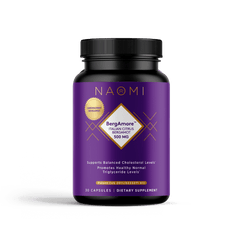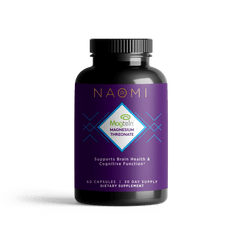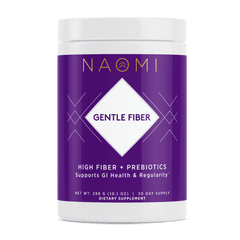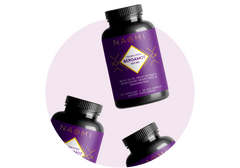The Truth About Salt
As a lifetime wellness warrior and advocate for good health, I can tell you that salt intake is one of the most hotly debated topics there is. You won’t be surprised to hear how controversial this is. I want to demystify the confusion around salt because I think for so many of you, it might just be the one thing standing between you and your right to incredible health!
As with many other grey areas that exist in nutrition, the story of salt continues to evolve. I think it is important for us as consumers to know the truth and how salt fits into a healthy lifestyle. And when you follow my lifestyle plan in my bestselling book, Glow15, you will learn how to easily incorporate natural salts into a safe, sustainable diet and lifestyle that utilizes the body’s natural cellular detoxification process known as autophagy.
Salt vs. Sodium and How Much?
You will often see the terms salt and sodium used interchangeably, so it is important to be able to distinguish between the two. The term “salt” commonly refers to table salt, the substance we use to flavor our food. It is made up of the elements sodium and chloride. Sodium is a very reactive chemical element and is not found freely in nature. When you ingest salt, the sodium and chloride ions separate from each other, making the sodium available for your body to use. Sodium and potassium are your body’s two most important electrolytes both needed in balance for the body to function normally and help maintain fluid, blood volume, and cellular pressure, rendering the amount of salt you consume important for your health.
The 2015-2020 Dietary Guidelines recommend limiting daily sodium intake to 2,300 mg per day, which is roughly equivalent to one teaspoon of salt. Other public health organizations have set daily intake targets as low as 1,500 mg or ~3/4 teaspoon, and yet others stand by the fact that individual needs for sodium can vary widely and are influenced not only by diet but by genetics, fluid intake, activity level, caffeine consumption, and other factors. The estimates of how many people are just simply “salt sensitive” varies widely. People with true salt sensitivity experience changes with blood pressure in direct response to salt intake and thus need to be cognizant of dietary intake.
Sources Of Salt In Our Food Supply & What To Do About It
Salt is used widely not only as a flavor enhancer but as a preservative and texturizer in processed foods. On average Americans consume about 3,400 mg of sodium or about 1 ½ teaspoon of salt per day. This is over fifty percent more than what our parents ate, and multiple times higher than what our ancestors consumed. Early humans mostly acquired salt from red meat, which naturally contains about 55 mg of salt per 3-ounce serving.
Today much of a person’s sodium intake comes from industrially processed foods, not necessarily the salt shaker, and we are not talking just about packaged processed snack foods like chips. Let’s look at chicken as an example, an unadulterated 4-ounce serving contains about 60 mg of sodium, however, much of the chicken sold commercially is injected with salt water bringing the milligram per serving up to 400 mg!
I think any of my colleagues from the medical, nutritional and natural product industries would agree that instead of obsessing about salt, you should work on improving your overall diet. If you simply focus on cutting back on processed products and eating more whole foods or minimally processed products made with simple whole-food ingredients, your sodium intake should not be of concern. Also opt for lots of potassium-rich vegetables and fruits, which will naturally help to balance sodium intake.
In my bestselling book Glow15, I recommend using Celtic Sea salt or Himalayan salt in all of the recipes. These salts both contain naturally occurring trace minerals with no additives, and are an excellent flavor enhancer. Natural salts also ensure sodium intake requirements are met as is important on a plan with a lower carb content, especially for those with a high activity level.
Even more importantly, since Glow15 is focused on good fats and relies on dipping into the state of ketosis to promote autophagy, salt plays a particularly special role. As your body releases excess water on a lower carbohydrate diet, it also lets go of sodium and valuable electrolytes. People often complain of fatigue or cramping while adapting and the main reason behind this complaint is due to hydration problems. While it is so ubiquitous in the community you can easily circumnavigate this rite of passage as you start out! Simply add a pinch of high-quality sea salt to your water and your cooking throughout the day.
It’s imperative the salt is high quality because you want to take advantage of its trace minerals. These minerals are what help balance fluids, avoid dehydration, balance blood sugar, promote a healthy pH balance in the cells and provide electrolytes that are so critical for proper function of muscle, nervous system and brain function. I like either Himalayan pink or a Celtic (gray) sea salt as they are the highest in trace minerals.
I advise you take salt in, consistently throughout the day opposed to one big heaping spoonful at once. I also love sipping on bone broth, as it provides quality salt as well as energizing, healing amino acids. You truly just can’t live without salt on a lower carbohydrate lifestyle so if you haven’t been focusing on including it or you have been scared to, please reconsider your stance!
My 9-Week Switch To Better Health plan will set you on a healthy and sustainable path for incorporating high-quality, healthy fats with a lower intake of healthy carbs and use of natural salts. I believe that the more we learn about the way the body responds to various components in food (including salt), as well as its extraordinary healing capability and the power of autophagy, the more we are can effectively change people’s lives by improving health, inspiring change, and increasing longevity.













